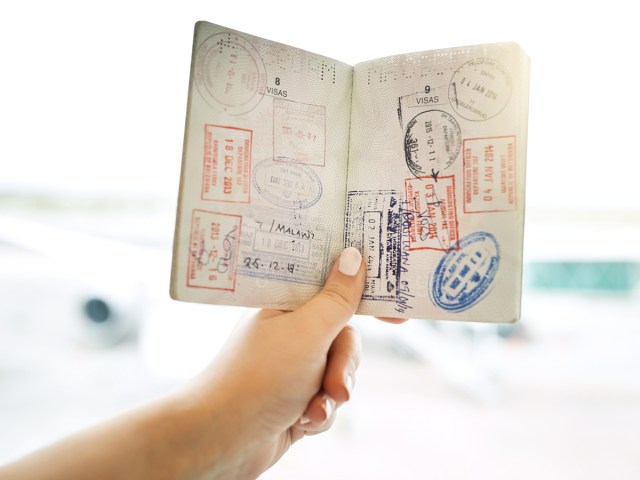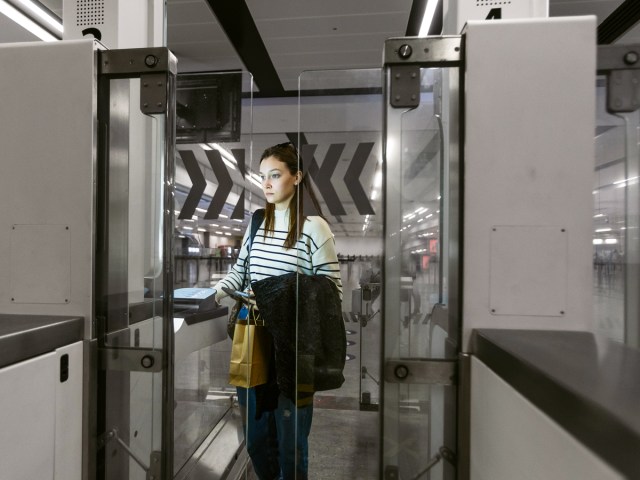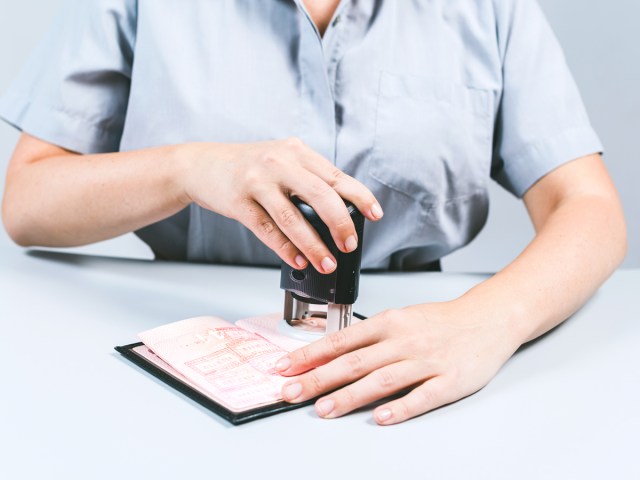For generations of travelers, few parts of an international trip were as satisfying as the thud of a rubber passport stamp. It was as much an adventurous badge of honor as it was official proof of your travels. But recently, it’s more common to breeze through customs with nothing more than a camera flash and an automatic gate sliding open. As more countries lean into biometric technology and digital records, the trusty passport stamp is, in many cases, fading away. Let’s take a closer look at where the beloved travel ritual stands today.
The History of Passport Stamps

Passports as we know them today date back to the early 20th century. As international travel became more common and countries tightened their borders after World War I, stamps became an easy way to indicate when someone had entered or exited a country. By the 1950s and 1960s — what many consider the golden age of air travel — passport stamps were part of the romance of travel. Each inked impression was like a small souvenir from a far-off place, turning a passport into a sort of trusty travel diary.
Over time, travel numbers surged and security protocols and technology evolved. Countries began adopting machine-readable passports throughout the 1980s, and in the 2000s, identity-confirming biometric features such as microchips started appearing. It wasn’t the end of passport stamps, but it did mark a major step toward stamps becoming more of a novelty than a necessity.
The Ink Starts To Fade

Australia was the first country to test self-scanning passport stations as early as 2007; the country eliminated routine passport stamps for most travelers in 2012. Visitors through major international airports are instead automatically processed through a digital system known as SmartGate, using facial recognition technology, fingerprints, and other biometric data stored in your passport. Instead of on a stamp, your record of entry and departure exists only in a database.
Other countries are increasingly following suit. The U.S. phased out passport stamps in 2022, opting instead for a digital record known as the I-94. Singapore stopped stamping passports the same year, replacing the ink with electronic visit passes sent by email. Argentina also phased out stamps in favor of QR codes, while Hong Kong and Macau issue landing slips rather than using the passport itself.
Most recently, the European Union began rolling out a large-scale digital Entry/Exit System (or EES) in October 2025. Countries in the Schengen Area — including France, Italy, Spain, and other popular destinations for U.S. travelers — will now replace physical stamps with biometric data and automated tracking. (Analog fans can breathe easy — Cyprus and Ireland, though in the EU, will continue to manually stamp passports for the time being.)
Countries That Still Use Passport Stamps

Despite the move toward digital documentation, the shift away from paper and stamps hasn’t been universal or consistent, and plenty of countries still offer the classic stamp-on-entry. Japan (if you don’t preregister online), Mexico, Morocco, Indonesia, South Africa, Canada (if required) and many countries across South America continue to have staffed customs counters with officers who will stamp your passport, even as automated options are added.
Many countries still operate with hybrid systems — what you get depends not only on the country, but sometimes even on the airport, terminal, or time of day. Some places will also still accommodate passport stamps for preference if they’re able to — just make sure to ask nicely.
Consider the Souvenir Passport Stamp

As official stamps become scarce, some travelers are turning to souvenir stamps, which are unofficial designs of popular tourism sites you can get at visitor centers or post offices. Destinations such as Machu Picchu or the polar bear capital of Churchill, Manitoba, Canada, have them. They serve no legal purpose, and they do come with a word of caution: Novelty stamps can compromise the validity of your passport, so it’s best to bring a travel notebook for them instead. But for the nostalgic among us, they may scratch the same itch.
Are Passport Stamps Gone for Good?

As more countries adopt biometric entry systems and electronic records, the humble passport stamp may soon become a relic. And passports themselves may soon join them. Some experts, such as border security expert Dr. Dalbir Ahlawat of Sydney’s Macquarie University, think physical passports may become altogether obsolete — maybe even within 10 years.
In Italy, some airports have begun trials for “FaceBoarding,” allowing travelers to get through the airport and board their plane without a passport or boarding pass. Singapore also began allowing residents to enter the country without a passport in 2024, using face and eye-scanning to identify travelers.
Don’t toss your passport just yet, though. While some countries charge full digital steam ahead, many parts of the world still face infrastructure and security challenges that make the global shift to fully digital systems more complex. For now, paper passports and, if you’re lucky, the occasional inked stamp, still have a little life left in them.
More from our network
Daily Passport is part of Inbox Studio, which publishes content that uplifts, informs, and inspires.
























